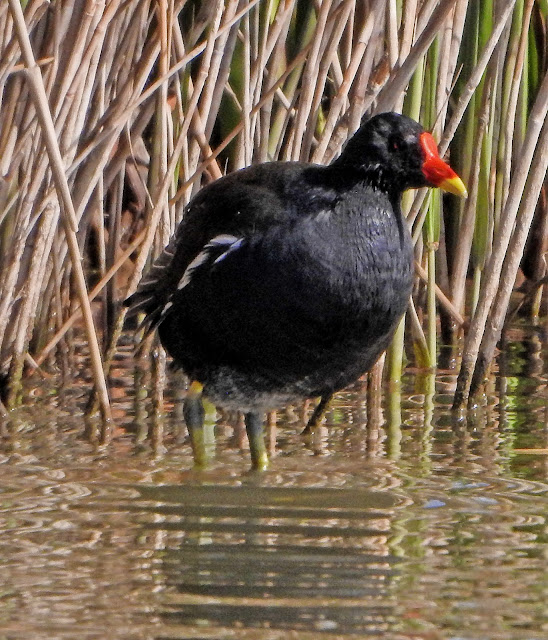The common bulbul (Pycnonotus barbatus) is a member of the bulbul family of passerine birds. It is found in north-eastern, northern, western and central Africa.
The bill is fairly short and thin, with a slightly downwards curving upper mandible. The bill, legs, and feet are black and the eye is dark brown with a dark eye-ring, which is not readily visible. It is about 18 cm in length, with a long tail. It has a dark brown head and upperparts. Sexes are similar in plumage.
It is a common resident breeder in much of Africa, and it has recently been found breeding in southern Spain at Tarifa. It is found in woodland, coastal bush, forest edges, riverine bush, montane scrub, and in mixed farming habitats. It is also found in exotic thickets, gardens, and parks.

The common bulbul is usually seen in pairs or small groups. It is a conspicuous bird, which tends to sit at the top of a bush. As with other bulbuls they are active and noisy birds. The flight is bouncing and woodpecker-like. The call is a loud doctor-quick doctor-quick be-quick be-quick.
This species nests throughout the year in the moist tropics, elsewhere it is a more seasonal breeder with a peak in breeding coinciding with the onset of the rainy season. The nest is fairly rigid, thick-walled and cup-shaped. It is usually situated inside the leafy foliage of a small tree or shrub.
Two or three eggs are a typical clutch. Like other bulbuls, it is parasitised by the Jacobin cuckoo.
This species eats fruit, nectar, seeds and insects.

The Common Bulbul (Pycnonotus barbatus) is a widespread, adaptable African bird known for its bold, noisy nature, diverse omnivorous diet (fruits, insects, nectar), and distinctive dark-hooded look with pale underparts, often found in gardens and woodlands; they are vocal, territorial, and comfortable near humans, often mobbing predators and nesting in bushes.
Key Facts:
Appearance: Brownish-grey body, dark brown head with a slightly crested look, black bill, legs, and eye; some subspecies have yellow undertail coverts.
Size: Medium-sized, about 18-20 cm long with a long tail, similar in plumage for both sexes.
Habitat: Highly adaptable, living in woodlands, savannahs, gardens, parks, and urban areas across much of Africa.
%2020.jpg)
Diet: Opportunistic omnivores, eating fruits, berries, seeds, flowers, insects, and sometimes small vertebrates, even scavenging human food.
Behavior: Very vocal, often the first to sing; lives in pairs or family groups, bold around humans, and participates in mobbing predators like snakes.
Nesting: Builds cup-shaped nests in trees or bushes, lays 2-3 eggs, with both parents caring for young.
Vocalization: Known for loud, musical calls, including whistles, warbles, and chirps, with a call often described as "doctor-quick".
Status: Widespread and abundant, not considered globally threatened.


























%20%2021.jpg)


%2020.jpg)



















